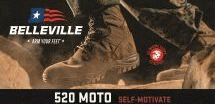
ABERDEEN PROVING GROUND, Md. — The latest iteration of the Army’s converged suite of common operational picture capabilities is now fielding to Soldiers after reaching a critical milestone with the approval of Command Post Computing Environment, Increment 1 for a full deployment decision.
This milestone, reached December 15, marks the culmination of an integrated test strategy consisting of cyber security assessments; interoperability and developmental tests; Soldier touch points; and operational assessments throughout the last 15 months. The FDD also verifies training packages, affordability and sustainment for the CPCE, Inc 1 capability, and ultimately signals the start of fielding key enhancements to operational units.
“This [decision] is significant because Increment 1 provides several improvements over Increment 0 that the Soldiers have been asking for,” said Col. Matt Paul, project manager Mission Command, assigned to the Program Executive Office for Command, Control, Communications-Tactical.
CPCE is the primary computing environment under Army Futures Command’s Common Operating Environment modernization effort, supporting command posts and combat operations. Inc 1 marks the first significant convergence of warfighting functions into CPCE and incorporates improvements across a wide range of applications, including new mission planning and whiteboard tools, geospatial capabilities to converge some Intel functions, and security and general performance enhancements.
“Convergence into a simple, intuitive, single common operating picture is critical,” said Col. Evert Hawk II, Mission Command lead for the Army Futures Command Network Cross-Functional Team. “For commanders to make rapid, informed decisions, they need to access and evaluate data from numerous sources across warfighting functions. The team has leveraged Soldier feedback to make sure we are bringing all that information together and presenting it in an integrated way.”
An operational test conducted last year assessed the effectiveness, suitability and survivability of the enhanced Inc 1 capabilities, proving the ability for commanders and staff to share battlefield information and collaborate through a customizable COP from the battalion to the combatant command level.
To produce the COP, CPCE Increment 1 receives and processes data feeds from more than 25 other digital systems inside of the command post, including those from Joint and Coalition partners. The software’s ability to produce a COP was successfully demonstrated as part of the OA during last year’s Joint Warfighting Assessment 2021 (JWA21) with the 4th Infantry Division. JWA21 included Joint and Five Eyes partners all contributing to CPCE’s COP using common data standards and interfaces.
CPCE Inc 1 served a similar role in Project Convergence 2021, connecting to a myriad of experimental systems to provide the joint COP for the Army’s signature modernization exercise.
“CPCE Increment 1 provided a foundational capability at PC21 to allow the Army to conduct experiments with promising new systems still in development,” said Paul. PC21 observations indicated a need for established Joint interface standards to better prioritize data convergence and to integrate a data fabric onto the CPCE environment.

Two weeks ago, the 41st Field Artillery Brigade in Grafenwoehr, Germany became the first unit equipped with the new CPCE baseline when it received Inc 1 software. The unit — which is the only European-based fires brigade — provides strategic, operational, and tactical-level fires and support throughout the U.S. Army European Command.
Other units receiving Inc 1 software this month include the 2nd Infantry Brigade Combat Team and 4th Brigade Combat Team (Airborne), 25th Infantry Division, at Schofield Barracks, Hawaii.
The software’s extensibility allows it to serve as a platform to integrate new or legacy 3rd party applications from industry and government sources. CPCE Increment 2 will build on Inc 1 and will converge additional warfighting functions, including sustainment and aviation applications.
Inc 2 will also add an initial data fabric capability to allow commanders and staffs to search and discover data they need more quickly and easily. Integrated data fabrics will stitch together different data formats to make relevant data visible and available throughout the ecosystem, facilitating sensor-to-shooter tasks, information advantage and decision dominance. Critically, CPCE Inc 2 will align the Army’s data fabric implementation to the Department of Defense’s Joint All-Domain Command and Control, known as JADC2, construct and will contribute to the department’s new Joint Warfighting Concept.
Inc 2 also plans to leap into the cloud, supporting Army imperatives to migrate applications into a Cloud environment. PM Mission Command plans to leverage the cloud to provide a unit with redundant capability to maintain its COP and its critical mission data during large-scale combat operations. Specifically, the Army intends to optimize CPCE cloud deployment for units ‘first in the fight’, referred to as Joint Forcible Entry units.
PM Mission Command has also executed a number of unit driven pilot efforts concurrent to Inc 1 development and fielding to demonstrate CPCE in a cloud environment. These efforts include the XVIII Airborne Corps “DragonCloud” and similar initiatives that have provided the ability for units to use CPCE from cloud service providers where sufficient bandwidth is available. These proofs of concept are addressing cloud hosting and cyber accreditation challenges, and ongoing experimentation is generating valuable feedback to inform future cloud deployment.
By Justin Eimers























































































































